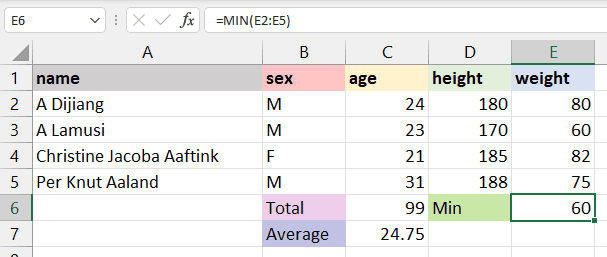Create Contingency Tables in Excel Easily

Contingency tables are powerful tools for data analysis, enabling you to compare and contrast categorical data across different variables. Whether you're a student working on a research project, a business analyst looking to understand market trends, or a researcher exploring datasets, learning how to create contingency tables in Excel is an invaluable skill. This guide will walk you through the steps to effortlessly craft these tables, ensuring you can unlock the full potential of your data with ease.
Understanding Contingency Tables
A contingency table, also known as a cross-tabulation or crosstab, displays the frequency distribution of two or more variables. Here’s what they are used for:
- Examining Relationships: To find out if there's a relationship or association between categorical variables.
- Data Summarization: Summarize large datasets for quick insights.
- Hypothesis Testing: Serve as a basis for statistical tests like Chi-square to test hypotheses about relationships.
📊 Note: Contingency tables help visualize the relationship between variables by breaking them down into frequency counts.
Steps to Create Contingency Tables in Excel
1. Organizing Your Data
Begin with a well-organized dataset. Ensure your variables are in columns, with each row representing an observation or record:

| Gender | Department | Performance Rating |
|---|---|---|
| Male | Sales | Excellent |
| Female | Marketing | Good |
2. Creating the Table Shell
Outline your contingency table by setting up columns for each category:
| Department | |||
|---|---|---|---|
| Gender | Sales | Marketing | HR |
| Male | |||
| Female | |||
3. Counting Frequencies
Now, use Excel's COUNTIFS function to populate the table:
- Select the first cell where you want to put the frequency count (e.g., intersection of Gender=Male and Department=Sales).
- Type in the formula:
=COUNTIFS(A2:A100, "Male", B2:B100, "Sales"), where A2:A100 is the range for Gender and B2:B100 for Department. - Copy and paste or drag the formula across the table to fill in the rest of the frequencies.
🔍 Note: Ensure your ranges in COUNTIFS correctly reference the columns where your data is stored.
4. Calculating Row and Column Totals
Using SUM function, add:
- Row Totals: Use
=SUM(FirstCell:LastCellInRow)to calculate totals for each row. - Column Totals: Use
=SUM(FirstCell:LastCellInColumn)for column totals.
5. Analyzing the Table
Once your table is filled, analyze it by:
- Looking for patterns or trends.
- Calculating percentages if required by dividing cell counts by row or column totals.
- Performing Chi-square tests for statistical analysis.
Finalizing Your Contingency Table
Formatting for clarity:
- Use borders to distinguish different sections.
- Format numbers and percentages to improve readability.
- Use conditional formatting to highlight significant patterns.
Once you've set up your contingency table, use the insights to guide your analysis or decision-making process. Excel's versatility allows for further customization and analysis, ensuring you get the most out of your data.
As you can see, creating contingency tables in Excel is not only straightforward but also incredibly insightful. By following these steps, you can swiftly organize and analyze data, making informed decisions with confidence. Whether for research, business analytics, or just understanding trends, mastering this technique will elevate your data analysis capabilities, ensuring you extract valuable insights from the numbers at your fingertips.
What is a contingency table used for?
+
A contingency table, or cross-tabulation, is used to examine the relationship between two or more categorical variables. It helps in summarizing data, visualizing the distribution, and often forms the basis for statistical tests to assess the significance of relationships between variables.
Can Excel handle larger datasets for contingency tables?
+
Yes, Excel can manage large datasets. However, with extremely large datasets, you might find performance issues. For very large or complex datasets, consider using Power Query in Excel or other specialized tools like R or Python for more robust data handling and analysis.
How can I add percentages to my contingency table?
+
To add percentages, you can either divide each cell by its respective row or column total. For example, for row percentages, use a formula like =Cell/RowTotal and format as a percentage.
Related Terms:
- Contingency table Maker
- contingency table format
- create contingency table in excel
- cross tabulation chart excel
- 2x2 contingency table excel
- contingency table example



